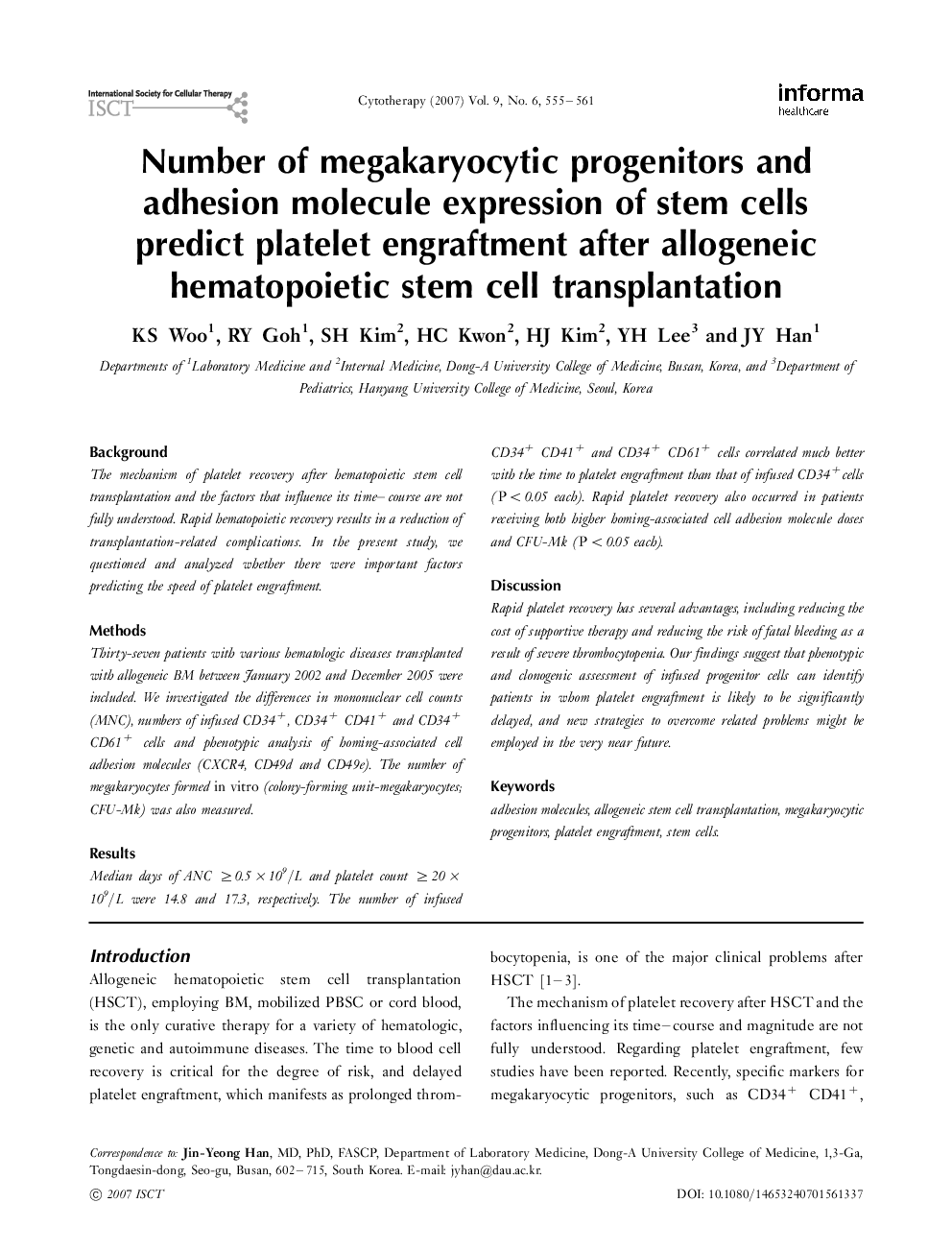| Article ID | Journal | Published Year | Pages | File Type |
|---|---|---|---|---|
| 2172446 | Cytotherapy | 2007 | 7 Pages |
BackgroundThe mechanism of platelet recovery after hematopoietic stem cell transplantation and the factors that influence its time–course are not fully understood. Rapid hematopoietic recovery results in a reduction of transplantation-related complications. In the present study, we questioned and analyzed whether there were important factors predicting the speed of platelet engraftment.MethodsThirty-seven patients with various hematologic diseases transplanted with allogeneic BM between January 2002 and December 2005 were included. We investigated the differences in mononuclear cell counts (MNC), numbers of infused CD34+, CD34+ CD41+ and CD34+ CD61+ cells and phenotypic analysis of homing-associated cell adhesion molecules (CXCR4, CD49d and CD49e). The number of megakaryocytes formed in vitro (colony-forming unit-megakaryocytes; CFU-Mk) was also measured.ResultsMedian days of ANC ≥0.5 × 109/L and platelet count ≥20 × 109/L were 14.8 and 17.3, respectively. The number of infused CD34+ CD41+ and CD34+ CD61+ cells correlated much better with the time to platelet engraftment than that of infused CD34+cells (P < 0.05 each). Rapid platelet recovery also occurred in patients receiving both higher homing-associated cell adhesion molecule doses and CFU-Mk (P < 0.05 each).DiscussionRapid platelet recovery has several advantages, including reducing the cost of supportive therapy and reducing the risk of fatal bleeding as a result of severe thrombocytopenia. Our findings suggest that phenotypic and clonogenic assessment of infused progenitor cells can identify patients in whom platelet engraftment is likely to be significantly delayed, and new strategies to overcome related problems might be employed in the very near future.
